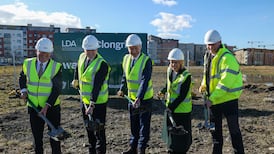Dublin will be seen as a “winner” in yesterday’s local government changes, with an increase in councillors from 131 to 183 in the four local authorities in the county. Dublin City Council, the State’s largest local authority, is moving from 52 to 63 members, while the three county councils each move up to the new maximum representation of 40. This will mean an increase of 12 councillors for Dún Laoghaire-Rathdown, 14 more for South Dublin and 16 more in Fingal.
However not everyone sees it as a win, including some councillors who are not too keen to have new neighbours in city or county hall.
FF submissions
Members of Fianna Fáil, whose numbers in Dublin were decimated in recent local elections, made submissions to the Local Electoral Area Boundary Committee asking that the representation not be increased. They cited the cost of funding councillors at a time of financial constraint.
The local authorities’ managers’ submissions to the committee largely dealt with suggestions on the redrawing of electoral divisions, apart from that of South Dublin County Council, which reflected the concern of its councillors that the increase in members from 26 to 40 “at this time would be seen by the public as an error”.
The city’s local electoral areas have been reduced from 11 to nine. The reconfigured areas will still be largely based on the north-south city divide, with one fewer electoral area on each side of the Liffey, bringing the numbers down to five on the north side and four on the south side.
The north side will have more councillors, at 37 versus 26, and slightly fewer constituents per public representative at 8,282. On the south side there will be 8,507 constituents for every councillor.
In making its divisions, the committee said it had regard to “local and community identities”. Largely the boundaries will align with the recently changed Dáil constituencies. However this will not apply to the north inner city area, where the local boundary is staying as it is, and the newly configured Cabra-Finglas and Ballymun areas.
Maximum limit
Based on the committee's formula of having one councillor for every 4,830 people, Dún Laoghaire-Rathdown should have 43 councillors. However a maximum of 40 councillors has been set for any local authority area, so that is what the council is getting. This still brings its representation up from the current 28. The number of electoral areas is staying at six and the boundaries remain unchanged, but Clonskeagh-Miltown is being moved from Dundrum into Stillorgan.
In Fingal, if the formula were followed there would be far more than 40 councillors; in fact the county would have 57. In keeping to the maximum limit, each Fingal councillor will have to represent 6,165 to 7,535 depending on the area. The committee is retaining five electoral areas for Fingal .
If South Dublin were to have one councillor for every 4,830 people, it would need 55. As it is it is getting an increase of 14, to give one councillor for every 6,630. An extra local authority area brings the number to six.









